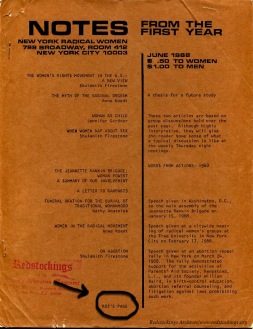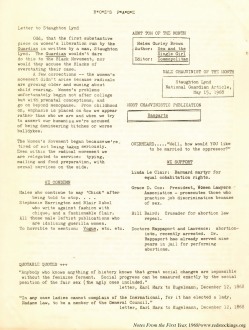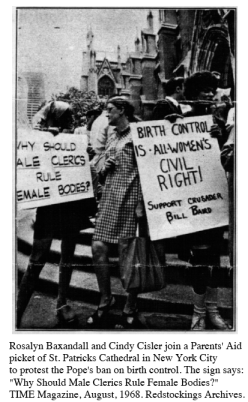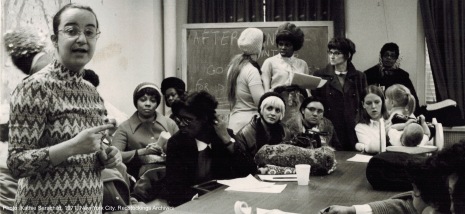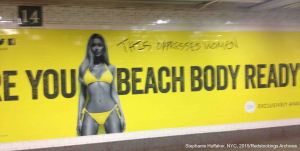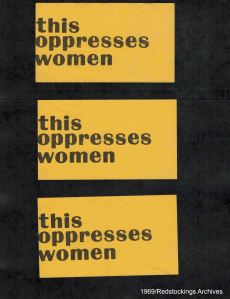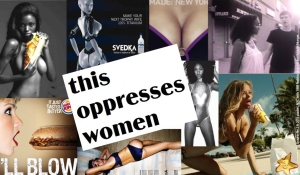September 1, 2016
A few days ago, on August 26th, the President of the United States once again proclaimed that which, for too many decades, has been confusingly dubbed “Women’s Equality Day.” August 26th is the day in 1920 when the 19th Amendment finally made it into the U.S. Constitution. But was this an amendment securing “women’s equality” on all fronts? No. After all, that’s what the struggle for the Equal Rights Amendment (the “ERA”) has long been aiming for. The ERA is still not in the Constitution.
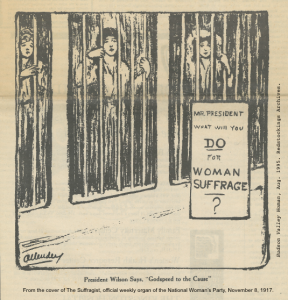 The 19th Amendment was the official victory of women’s long fight for our right to vote on equal terms with men. The battle was won less than 100 years ago. For much longer than that, women of the U.S. were openly denied the right to vote on the grounds that they were women (though in a few states, women won the right a little earlier).
The 19th Amendment was the official victory of women’s long fight for our right to vote on equal terms with men. The battle was won less than 100 years ago. For much longer than that, women of the U.S. were openly denied the right to vote on the grounds that they were women (though in a few states, women won the right a little earlier).
The passage of the 19th “Woman’s Suffrage” Amendment was paradoxically both a huge and a tiny step toward women’s equality and democratic voting rights for all. Huge, of course, because the right to vote is such a deep and important democratic principle. This is undoubtedly why it took such an arduous, organized feminist struggle — and even a World War and revolutionary pressures from abroad — for us to win it here in the U.S.

These ten women had just been released from a sixty day sentence in a Washington workhouse following a picket at the White House, Washington D.C. Image by © Hulton-Deutsch Collection/CORBIS. Date unknown.
But the victory was also a tiny step — both toward fully equal rights and freedoms for women AND toward a truly democratic voting system with voting rights and access for all. When the 19th Amendment was enacted in 1920, for instance, African American women in most of the South gained for the first time only the same right to vote that African American men had: which is to say that both now officially had the right in the Constitution, but in practice, African American women joined African American men in facing the massive denial of their voting rights through violence and deceptive practices.
Even now in 2016, as the President marks the winning of women’s suffrage under the banner of “Women’s Equality Day,” new highly restrictive voter ID laws are reverberating and spreading from state to state, targeting neighborhoods of low-wage, unemployed people and people of color with “surgical precision,” and making areas with dense immigrant populations like Arizona known as “The Mississippi of the West.” There are far more limitations on U.S. voting rights than we’ve realized, and excluding people based on race and sex are only some of the restrictions we have faced.
 The right to vote for women proved such a tiny step, so disappointingly ineffective and ornamental that in 1969, nearly 50 years after the passage of the 19th Amendment, some of the militant women’s liberation organizers dramatized this with a demonstration to “give back the vote” because our country still showed little progress toward true women’s equality, even with women in the ballot box. “We were cheated,” a flier from 1969 reads, “Emancipation was a lie. For a century our grandmothers fought, and look what they got! The vote! The worthless token of power we never had!”
The right to vote for women proved such a tiny step, so disappointingly ineffective and ornamental that in 1969, nearly 50 years after the passage of the 19th Amendment, some of the militant women’s liberation organizers dramatized this with a demonstration to “give back the vote” because our country still showed little progress toward true women’s equality, even with women in the ballot box. “We were cheated,” a flier from 1969 reads, “Emancipation was a lie. For a century our grandmothers fought, and look what they got! The vote! The worthless token of power we never had!”
After almost 50 years of stalled feminist progress, these women in the 1960s were learning that the voting tool isn’t enough for women to be liberated. Ironically, the Suffrage movement leading up to the 19th Amendment is testament to the fact that feminist organizing and struggle carry as much weight, if not more, than the vote itself. We won the right to vote without having the right to vote. The vote can only be a supplement to the feminist fight as a whole.
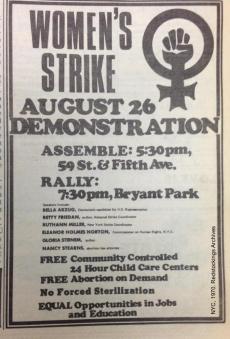 In fact, mass-movement organizing is what precipitated “Women’s Equality Day.” On August 26, 1970, the 50th anniversary of the women’s suffrage victory, more than 20,000 women filled 5th Avenue in New York City, marching in a Women’s Strike for Equality. Outside of New York others marched in 42 states, 90 U.S. cities, with solidarity actions all over the world.
In fact, mass-movement organizing is what precipitated “Women’s Equality Day.” On August 26, 1970, the 50th anniversary of the women’s suffrage victory, more than 20,000 women filled 5th Avenue in New York City, marching in a Women’s Strike for Equality. Outside of New York others marched in 42 states, 90 U.S. cities, with solidarity actions all over the world.
These actions on “strike day,” and the several years of spirited mass-organizing that preceded it, may have been what led to the overstated-yet-bland “Women’s Equality Day,” but the demands of the strike were for so much more than a symbolic commemorative day: the marchers wanted equal opportunity in education and employment, free  abortion on demand, and 24 hour child care centers. These are demands for programs that would bring the vast majority of women closer to full equality — far more than just the vote. But the false equivalency of “Women’s Equality Day” with what would be better named “Women’s Suffrage Day” refuels the myth that the vote liberated us.
abortion on demand, and 24 hour child care centers. These are demands for programs that would bring the vast majority of women closer to full equality — far more than just the vote. But the false equivalency of “Women’s Equality Day” with what would be better named “Women’s Suffrage Day” refuels the myth that the vote liberated us.
This tough herstory reminds us that even though we have the option to vote this year for a female president who has a chance to win in an unfair voting system that desperately needs changing, this is likely to prove as inconsequential to women’s continuing overall advance as the new radical feminists of the 1960s found that winning the vote had been for the first 50 years. Not to mention that the United States is severely behind many other countries on the planet, who have had female leaders for decades.
And that’s only one small example of how the U.S. falls short for women, and most of its citizens. We are also behind many other countries in attaining the social programs like free childcare and college, as well as laws mandating paid parental leave, shorter workweeks, and vacations for all workers. Such programs, with a fighting feminist union behind them, can be a springboard to full liberation and equality for women.
Naming August 26th “Women’s Equality Day” obscured the actual victory being celebrated, keeping women from knowledge of its lessons. We have much work to do outside the ballot box. The pallid, misunderstood celebrations of “Women’s Equality Day” are over. It’s time to get to work.
– Adrielle Munger and Kathie Sarachild








